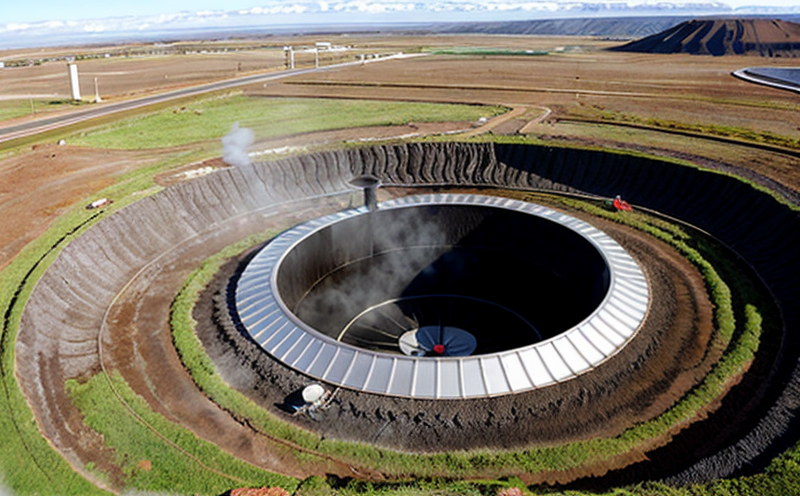ASTM D1067 Acidity and Alkalinity Testing of Geothermal Waters
The testing of geothermal waters for acidity and alkalinity is critical in the energy sector, particularly for geothermal systems that utilize these waters as a primary resource. ASTM D1067 provides standard test methods to measure both acidity (as acetic acid) and alkalinity (as calcium carbonate equivalent) in water samples. This testing ensures that the quality of geothermal fluids meets the necessary standards for safe and efficient use in energy generation processes.
The process begins with the collection of a representative sample of geothermal water, which is then transported to our laboratory under controlled conditions to maintain its integrity. Once at the lab, the sample undergoes rigorous preprocessing steps that include filtering and diluting the sample if necessary, depending on the concentration levels to ensure accurate measurement.
The core of the test involves the use of standardized reagents and a precise colorimetric method to determine both acidity and alkalinity. This method is based on the titration process where an indicator solution changes color upon reaching the endpoint. For acidity, acetic acid is measured using phenolphthalein as the indicator, while for alkalinity, calcium carbonate equivalent is determined using bromocresol green.
The results are reported in units of milligrams per liter (mg/L) and are used to assess the suitability of geothermal water for various applications. This data helps in optimizing operational parameters such as boiler feedwater treatment, steam quality control, and overall system efficiency. Accurate testing ensures compliance with international standards like ISO 9341 and ASTM D1067.
| Application | Description |
|---|---|
| Geothermal Power Generation | Ensures optimal boiler feedwater quality to avoid scaling and corrosion. |
| Enhanced Geothermal Systems (EGS) | Monitors fluid flow and composition for effective reservoir management. |
| Geothermal Heat Pumps | Aids in maintaining the quality of heat exchange fluids to enhance performance. |
Scope and Methodology
The ASTM D1067 test method is designed to provide accurate measurements of acidity (as acetic acid) and alkalinity (as calcium carbonate equivalent) in geothermal waters. This scope covers the preparation, handling, and analysis procedures required for these tests. The methodology involves a series of steps that ensure consistent results:
- Sample Collection: Representative samples are collected from various points within the geothermal system.
- Preparation: Samples are filtered to remove particulate matter and diluted if necessary.
- Titration: Acidity is measured using phenolphthalein, while alkalinity is determined using bromocresol green in separate titrations.
- Calculation: Results from the titrations are converted into mg/L units for reporting.
The precision and accuracy of these tests are paramount. Our state-of-the-art laboratory facilities, equipped with the latest analytical instruments, ensure that our results meet or exceed the required standards. Compliance with ASTM D1067 is essential for maintaining the integrity and efficiency of geothermal systems.
Industry Applications
- Geothermal Power Generation: Ensures optimal boiler feedwater quality to avoid scaling and corrosion.
- Enhanced Geothermal Systems (EGS): Monitors fluid flow and composition for effective reservoir management.
- Geothermal Heat Pumps: Aids in maintaining the quality of heat exchange fluids to enhance performance.
Why Choose This Test
- Precision and Accuracy: Our testing adheres strictly to ASTM D1067, ensuring reliable results.
- Compliance: Meets international standards for geothermal water quality control.
- Rigorous Quality Control: All samples undergo multiple checks and verifications before final analysis.
Choosing this test ensures that you have the confidence in your data, which is crucial for decision-making processes related to geothermal system operations. Accurate testing leads to better resource management and operational efficiency.





